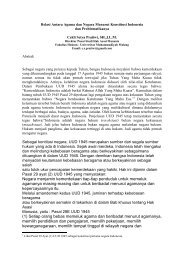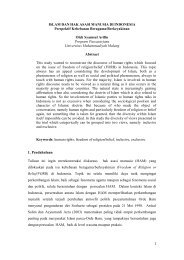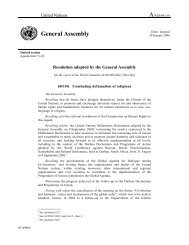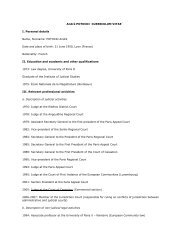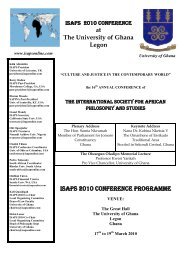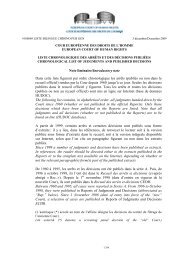Fredrika Shavit v. Rishon Lezion Jewish Burial Society
Fredrika Shavit v. Rishon Lezion Jewish Burial Society
Fredrika Shavit v. Rishon Lezion Jewish Burial Society
You also want an ePaper? Increase the reach of your titles
YUMPU automatically turns print PDFs into web optimized ePapers that Google loves.
singles them out from their compatriots? Is the sensitivity of the people of<br />
<strong>Rishon</strong> <strong>Lezion</strong> to non-Hebrew letters and Gregorian dates more acute<br />
than that of the rest of the population of Israel? There is no difference<br />
between the residents of <strong>Rishon</strong> <strong>Lezion</strong> and the residents of Greater Tel<br />
Aviv (for example), at least in the present matter. The only difference is<br />
the ruling of the rabbi of the <strong>Jewish</strong> burial society. But the ruling of the<br />
rabbi of the <strong>Jewish</strong> burial society does not obligate the entire public. On<br />
the other hand, the Gideon-Kestenbaum ruling is binding; it obligates<br />
even the rabbi of the <strong>Rishon</strong> <strong>Lezion</strong> <strong>Jewish</strong> burial society.<br />
Additionally, as we have said, the <strong>Jewish</strong> burial society made<br />
itself the guardian of those buried in <strong>Rishon</strong> <strong>Lezion</strong> – of them, their<br />
relatives, and the feelings of these parties. However, the Court has not<br />
heard from the relatives of the deceased, and no complaint from their lips<br />
has reached us. The <strong>Jewish</strong> burial society’s claims have not left the realm<br />
of conjecture, and conjecture, of course, is limitless. We add, however,<br />
that even if someone did come before us with a complaint, it is doubtful<br />
that we would hear them. However, since no complaint was issued, there<br />
is certainly no need to bother with such never-ending conjecture.<br />
20. This claim of harm to the dignity of the dead and the feelings<br />
of the families is not new to us. It came up in Kestenbaum [6], and the<br />
Court dealt with it comprehensively. Thus, for example, said President<br />
Shamgar:<br />
A gravestone is not a public structure, but rather, first and<br />
foremost, a sign of the personal connection between the living,<br />
who keep the memory of the departed alive in their hearts, and<br />
those who have passed on; it is a memorial that is erected by<br />
those who will come to visit, that is intended, first and foremost,<br />
for them, and those concerned with it must be protected and<br />
distinguished.<br />
…



